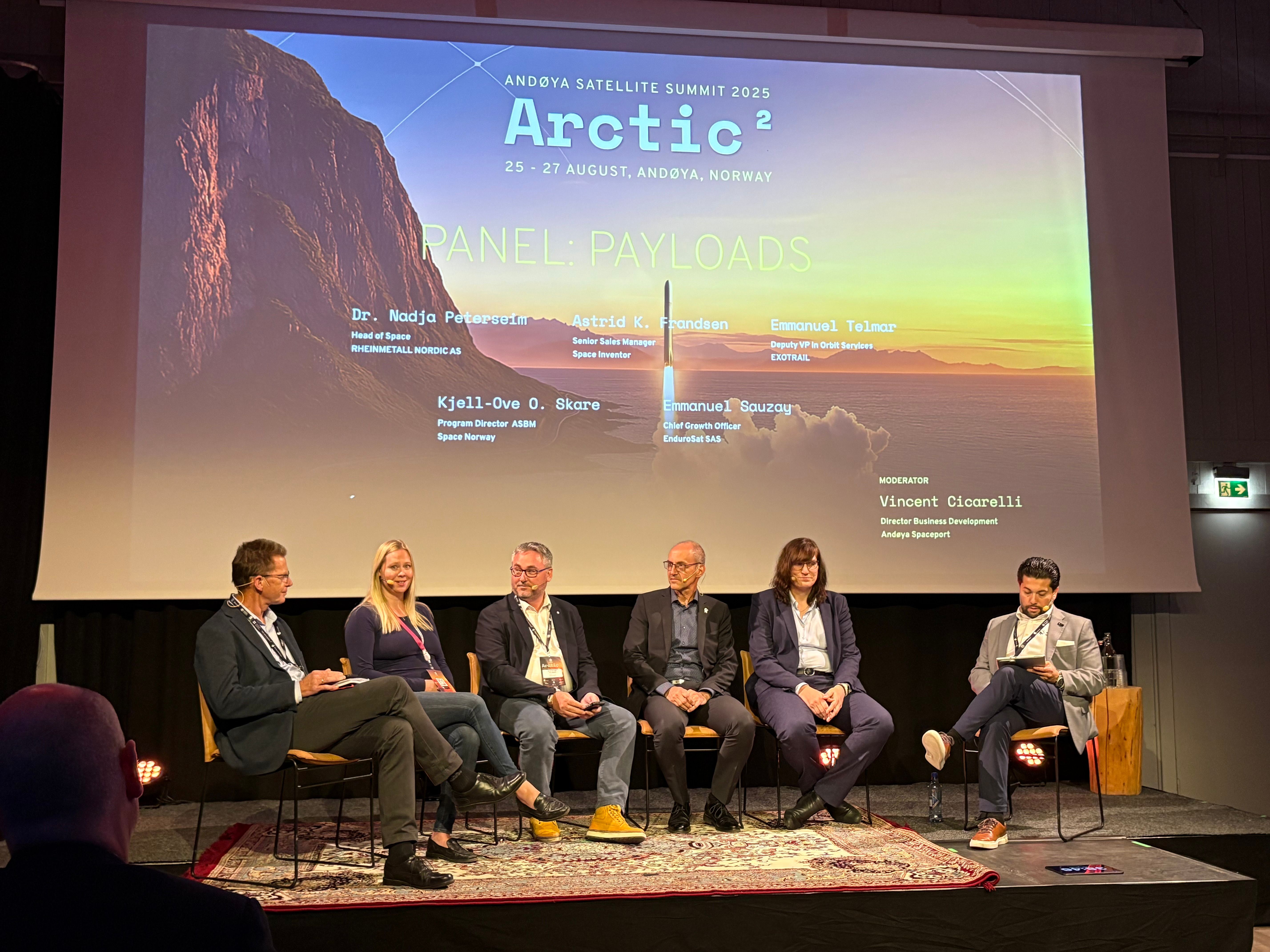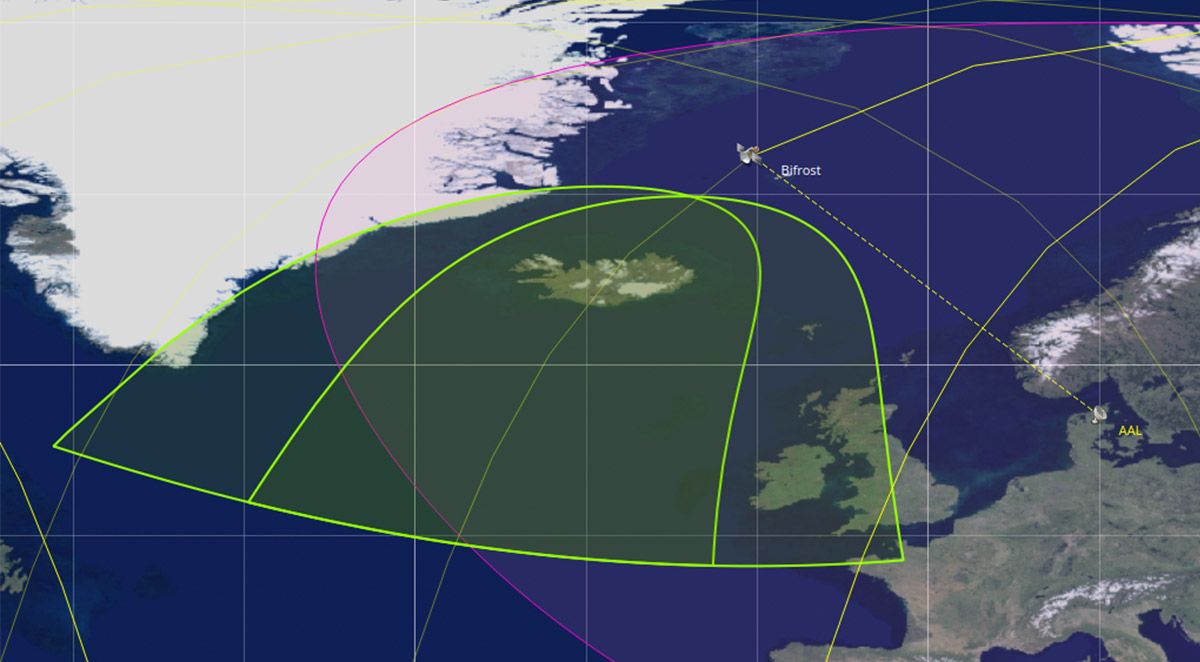Andøya Satellite Summit 2025
At Andøya Satellite Summit 2025, Astrid Kjeldal Frandsen represented Space Inventor joined a panel discussion on the future role of spaceports in supporting satellite missions. The conversation brought together experts from across the ecosystem, from manufacturers and integrators to launch providers and operators, to share their perspectives on challenges and opportunities.
In the Q&A below, our Senior Sales Manager, Astrid Kjeldal Frandsen, highlights what matters most for small satellite platform providers when it comes to launch readiness, integration, and long-term mission success.

Q: What are the most important factors you consider when choosing a launch provider or spaceport?
“For us, schedule certainty is absolutely critical. Our customers expect launches aligned with ITU filing deadlines, IOD campaigns, or service rollouts, and delays ripple through everything. Orbital precision and flexibility also matter — we often need tailored orbits rather than one-size-fits-all. And of course, cost competitiveness remains important — not just launch price, but the total mission economics including insurance and operations.”
Q: How can spaceports better support your mission readiness and integration timelines?
“Early and consistent access to integration facilities is a big help, so our teams can verify payload interfaces well before the campaign. Standardized integration frameworks — both mechanical and EGSE — really reduce nonrecurring costs and simplify multi-customer launches. And finally, streamlined customs and shipping processes are vital, especially for dual-use hardware, because administrative delays can be just as costly as technical ones.”
Q: What are your biggest logistical or regulatory pain points when preparing for launch?
“As a Danish and EU manufacturer, every satellite we build is technically a dual-use item, so export licensing is unavoidable. Even for trusted destinations like the US or Japan, the approval wait is typically four weeks or more, and that has to be built into every schedule. Launch liability and insurance frameworks vary by country and can slow down contract execution. And late manifest changes are particularly painful — they can cascade into redesigns of mission operations, frequencies, or even ground segment preparation.”
Q: How do you see your payload needs evolving over the next 5–10 years, and what should spaceports be doing now to prepare?
“We see a trend towards serviceable satellites. With projects like SatAPP, we’re designing platforms that can be upgraded in orbit, so spaceports should be ready for servicing-compatible deployments and docking demos. Orbit diversity is also expanding: beyond SSO, we’re preparing missions in VLEO for drag-assisted demos, GEO nanosatellites for communications and servicing, and even cis-lunar precursors. Finally, we expect more multi-payload missions, where we integrate third-party propulsion demos or sensors. Here, spaceports can really help by facilitating collaboration between payload providers during integration — not just between integrator and launcher.”
Q: What role do you see spaceports playing in fostering collaboration across the ecosystem?
“I believe spaceports can be true ecosystem hubs, not just launch pads. They can actively connect payload developers, platform integrators like Space Inventor, launch providers, and even downstream service companies. By hosting shared testbeds and joint integration campaigns, spaceports can cut costs and accelerate timelines across the supply chain. They also have a role to play in harmonizing interface standards, which reduces friction internationally. And if they streamline cross-border operations — licenses, customs, safety approvals — they open the door for smaller players to compete globally.”
Q: As Space Inventor is a small satellite platform provider, how can spaceports help reduce the cost and complexity of integration for modular satellite systems?
“For us, predictability and standardization are key. Every time integration has to be customized, it adds cost and engineering overhead. Spaceports can really help by offering common mechanical and electrical interfaces, clear integration guidelines, and shared testing facilities — so we can handle the routine parts of integration efficiently and repeatably.
But there’s another important dimension: many of our missions are for defense and security customers. Here, facilities that already meet high safety standards — for example, NATO-compliant environments — would make a big difference. When working with cryptographic technologies, the requirements on how hardware is stored, tested, and handled are very strict. If spaceports can provide certified secure facilities, they not only reduce complexity, but also enable us to take on more advanced and sensitive missions with confidence."
Panel Participants
- Nadja Peterseim — Head of Space, Rheinmetall Nordic AS
- Emmanuel Telmar — Deputy VP in Orbit Services, Exotrail
- Kjell-Ove Orderud Skare — Program Director ASBM, Space Norway
- Emmanuel Sauzay — Chief Growth Officer, EnduroSat SAS
- Vincent Ciccarelli, MBA — Director Business Development, Andøya Space
Popular articles




